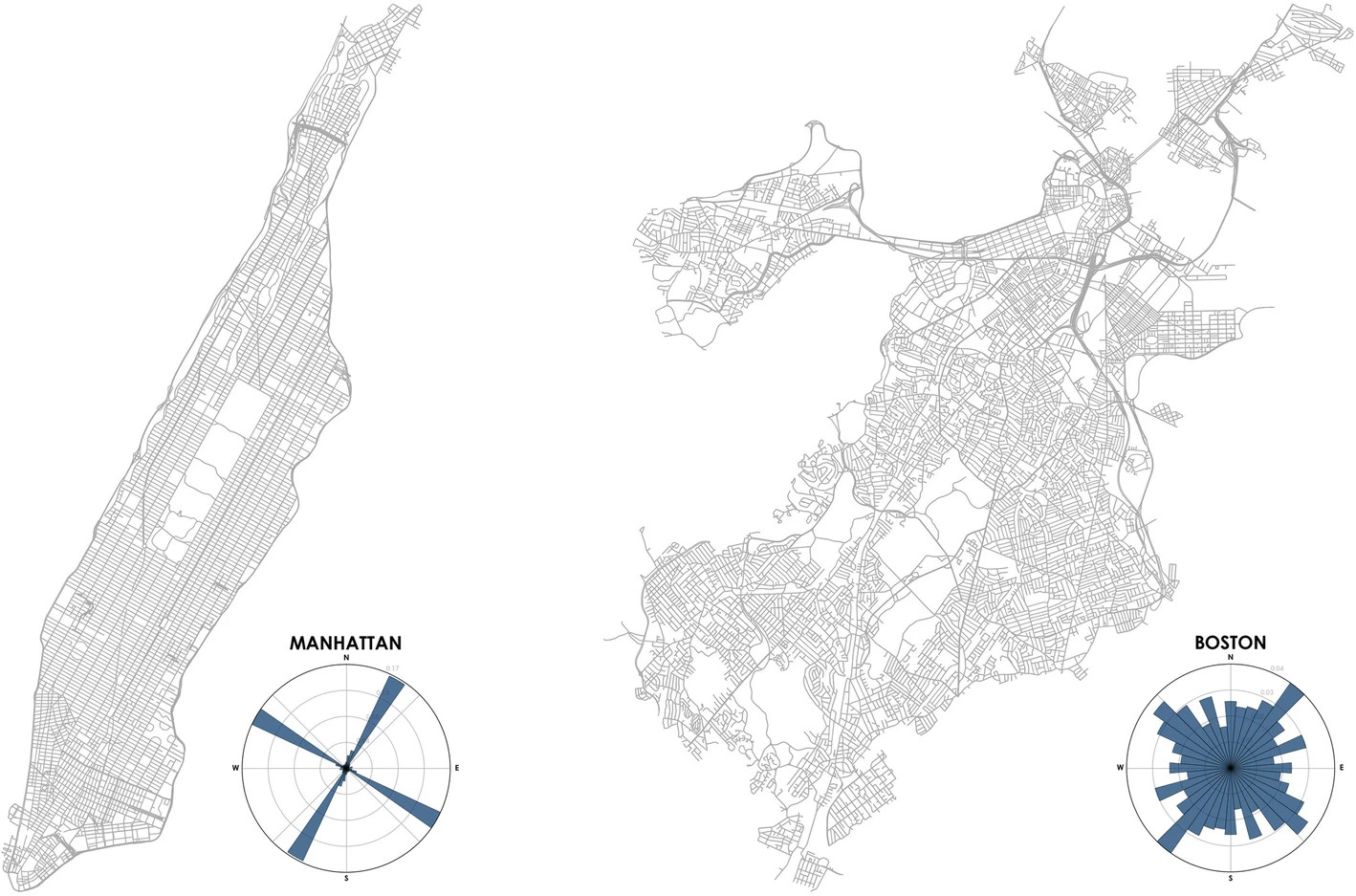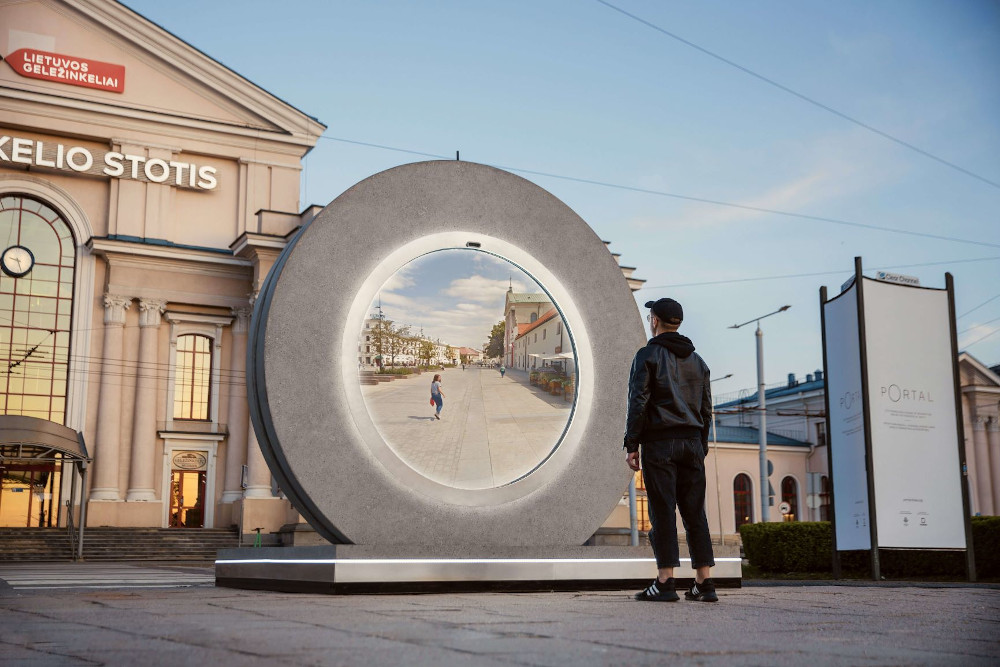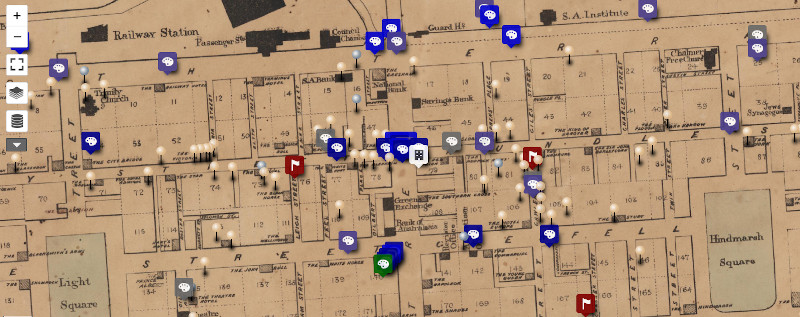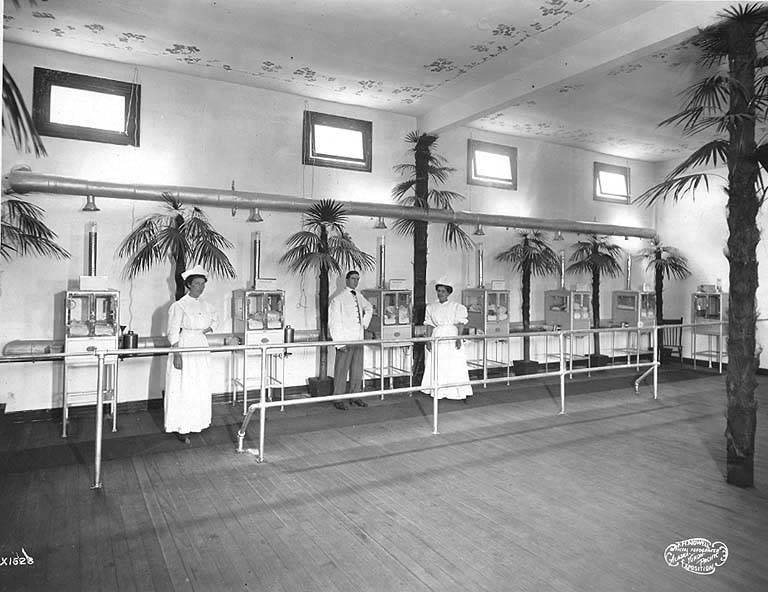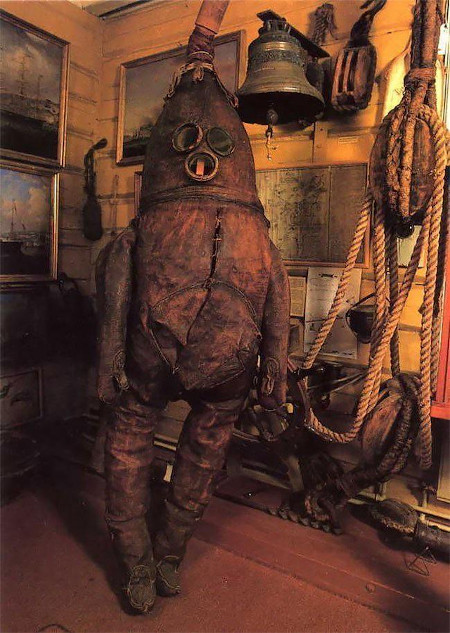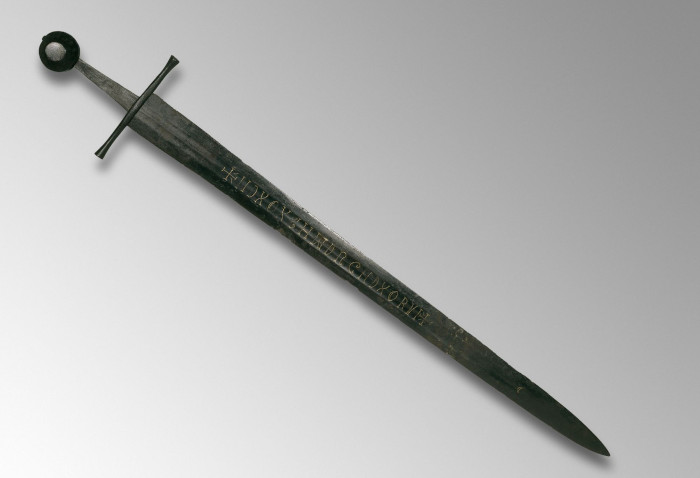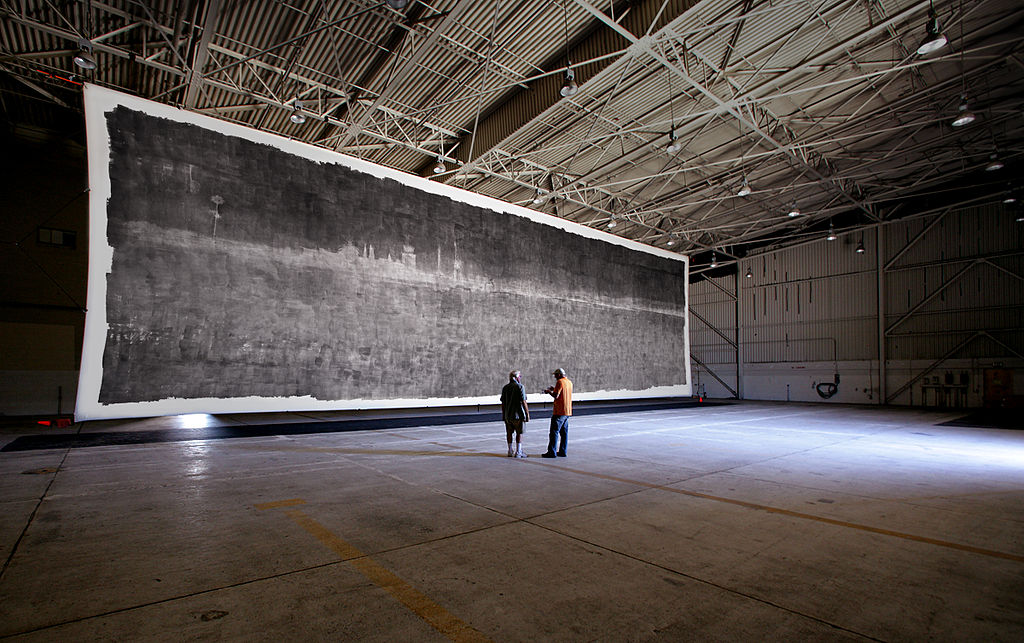
After California’s Marine Corps Air Station El Toro was decommissioned in 1999, a group of six photographers set out to convert one of its F-18 hangars into the world’s largest pinhole camera. They made the building light-tight, coated a 34-meter expanse of muslin cloth with gelatin silver halide emulsion, and suspended it 80 feet from the hangar door, in which they opened a 6mm pinhole. After 35 minutes they had an inverted image of former air station, with the San Joaquin Hills in the background.
Eighty volunteers developed the print in a tray the size of an Olympic swimming pool and washed it with firehoses. The finished print fills 325 square meters; it and the hangar hold records as the world’s largest print photograph and largest camera.

